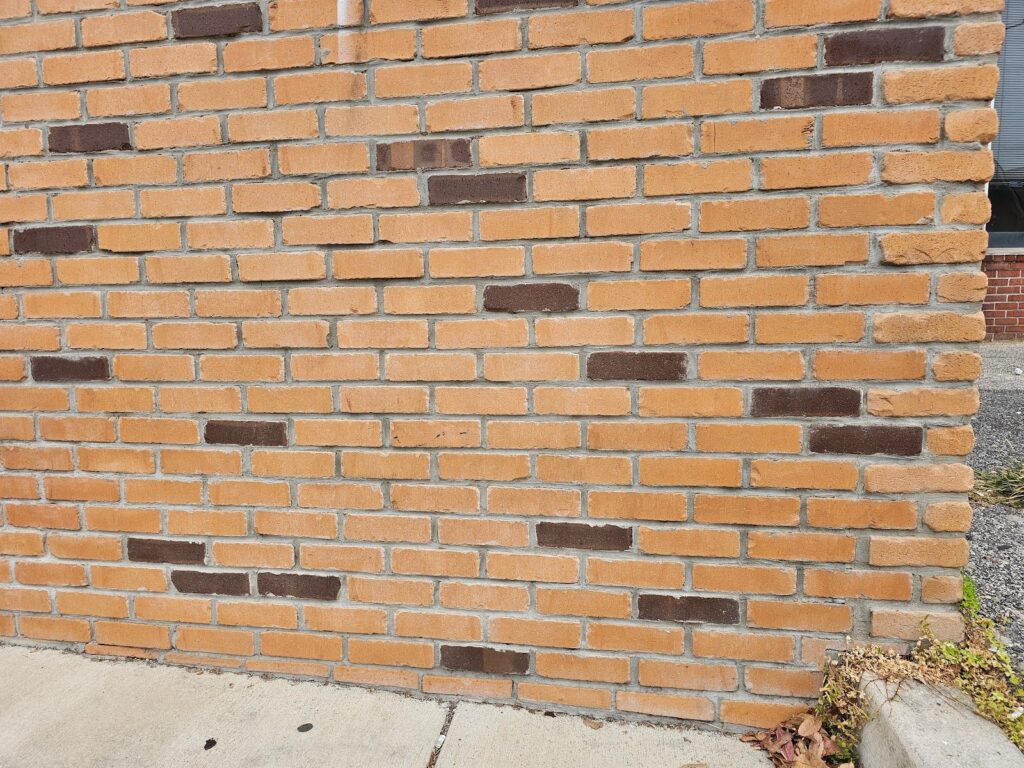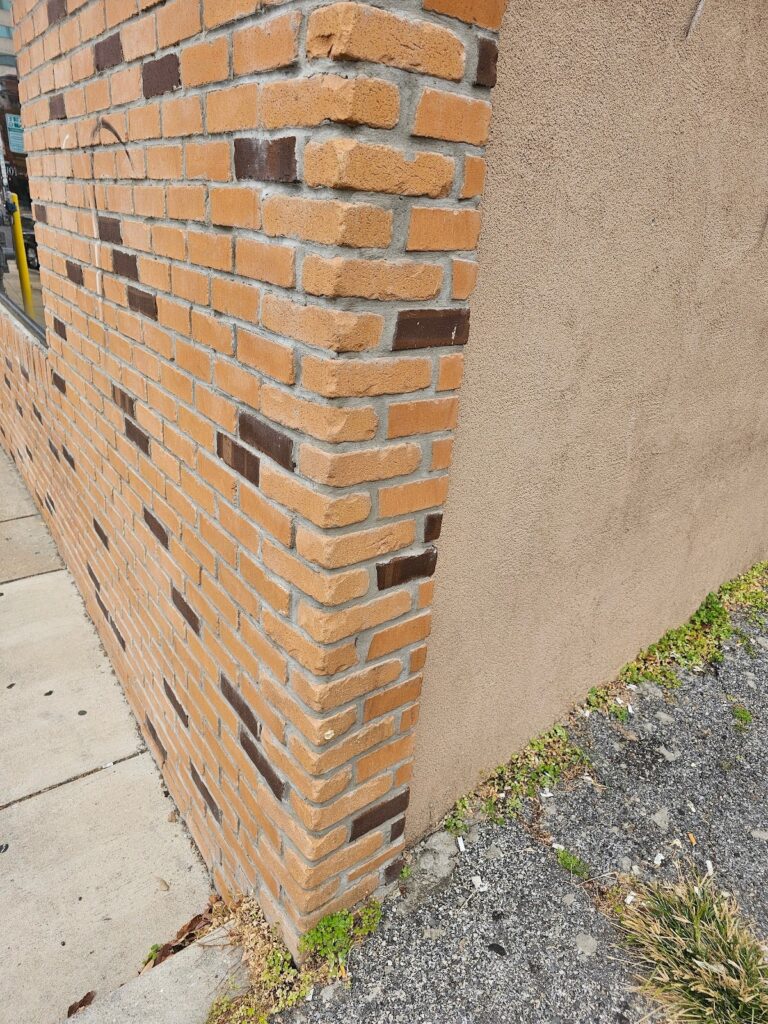Why Fake Bricks Exposed at Corners Can Be a Problem
Fake brick is really not common here in Washington DC. There are thousands of buildings, throughout the city, that are made with real bricks. Today though we’re going to look at a really interesting particular building facade that looks very similar to real brick, but when you look very closely at one particular spot, you can tell that it’s not actually real. In general, brick adds a lot of value to a facade of a building.
Brick buildings are generally worth a lot more than buildings made with cheaper looking materials. In the sprawling suburbs outside of Washington DC, track homes abound and many are built with faux stone at the base of the building facade and then vinyl siding cladding the remainder of the building.
Taste and preferences are individual and can vary from one person to the next, but generally vinyl siding simply looks cheap and plasticy. The remainder of this particular building happens to be clad with a cement stucco, but the ground level is clad with fake bricks. It intuitively sounds like fake bricks would be much cheaper than real bricks, but they’re surprisingly actually more expensive.
There’s a few reasons for why fake bricks are more expensive than real bricks and we’ll talk about some of them here today, and in this coming week’s nect blog article, and even though they’re more expensive, it doesn’t mean that they’re nicer or look better. In most cases, a discerning eye can tell the difference. This particular building almost tricked us though, and we almost didn’t notice that it was fake brick until we looked closer.
The picture below shows an area of this main front facade. From a reasonable distance, it’s visually convincing, it almost looks like real brick. It doesn’t however look like historic common brick which is found throughout Washington DC and the vast majority of historic building facades. Pressed brick is slightly different than common brick and has a tighter mortar joints and more overall consistency in the straightness trueness of the shape.

Common historic bricks were used in most buildings built before the 1920’s, here in Washington, DC. Even where pressed bricks were used at the front facade, common bricks were often used at the inner part of the same partition, on a hidden part of the wythe of the brick assembly. As well, the side walls and rear walls of the original buildings were also generally built with historic common bricks because they were cheaper, at the time. While these common bricks are less consistent and generally have a wider mortar joint, generally built with lime mortar, they don’t actually look that different. Historic pressed bricks were made with clay which was filtered before molding and firing of the brick.
This difference in composition makes the brick less consistent. Often in the firing process, when the bricks are essentially cooked at high temperatures, a high degree of variation in the components of the clay will cause the brick to twist and bend or warp, slightly. Generally, these differences that happened in the firing process don’t render the bricks worthless, they just make them a little bit less consistent. This difference in consistency was generally made up for through wider mortar joints. Pressed brick, by comparison, will often have very thin mortar joints slightly thicker than just 3/16 of an inch or ¼ of an inch.
In this coming week, we’ll look at the edge or termination transition of this fake brick and we’ll talk more about the restoration processes for repointing historic bricks.

Our company, Dupont Tuckpointing and Masonry, specializes in masonry restoration, historic brick repointing, and tuckpointing services in the Washington D.C. area. These buildings are uniquely historic, and their preservation requires skilled masons who are technically trained in the best practices and knowledge of proper restoration techniques.
We understand the significance of maintaining the architectural integrity of these historic structures, and our team of experienced professionals is dedicated to delivering exceptional craftsmanship. Whether you require masonry restoration, tuckpointing, or brick repointing services, we are here to help.
At Dupont Tuckpointing and Masonry, we take pride in our work and strive to ensure that every project is executed with the utmost care and attention to detail. We are committed to preserving the rich heritage of Washington D.C.’s built environment for generations to come.
If you have any questions or needs regarding masonry restoration, historic brick repointing, or tuckpointing services, please do not hesitate to reach out to us. We would be delighted to assist you and provide you with the expertise and quality workmanship that your historic property deserves.You can reach us by telephone at (202) 796-7644 and you can reach us by email from the contact form on our website at https://duponttuckpointingmasonrydc.com/contact-us/.




